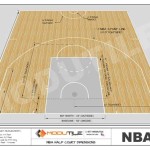Handrail Requirements for Outdoor Stairs: Ensuring Safety and Accessibility
Outdoor stairs are essential components of many homes, businesses, and public spaces. They provide a safe and convenient means of accessing different levels of a structure, but it's crucial to ensure that these stairs meet specific handrail requirements to safeguard users from potential falls and injuries.
Height and Width
The height and width of handrails are important factors to consider. According to most building codes, handrails should be installed at a height of 34-38 inches (860-965 mm) above the stair nosing. This measurement ensures that users can comfortably grasp the handrail while maintaining a good posture. The width should typically be between 1.25-1.63 inches (32-41 mm) to accommodate a wide range of hand sizes and grip strengths.
Placement and Design
Handrails should be installed on both sides of outdoor stairs with a clear runway of at least 36 inches (915 mm). This allows users to have an uninterrupted handhold along the entire length of the stairs. Additionally, handrails should be continuous, meaning they do not have any breaks or gaps, ensuring a consistent and reliable support for users.
Materials and Durability
Handrails can be made from various materials, including wood, metal, and PVC. The material should be durable, weather-resistant, and able to withstand the elements, such as rain, snow, and sunlight. Metal handrails are typically stronger and more durable than wood, but they can be more expensive. Wooden handrails offer a natural look and can be stained or painted to match the surroundings.
Additional Considerations
Besides height, width, placement, and materials, there are additional factors to consider for outdoor handrail requirements:
- End Returns: Handrails should have extensions at the top and bottom to prevent users from slipping over the ends.
- Knuckles: Protruding knuckles or other sharp edges should be avoided to prevent hand injuries.
- Grab Bars: For added safety, grab bars can be installed at the top and bottom of stairs, providing additional support for users.
- Lighting: Adequate lighting is essential for stairs to ensure visibility, especially at night.
Importance of Compliance
Complying with handrail requirements for outdoor stairs is crucial for ensuring the safety of users. They provide stability, balance, and support while ascending or descending stairs, reducing the risk of falls and injuries. Moreover, proper handrails can enhance accessibility for individuals with disabilities, allowing them to navigate stairs with confidence.
Building codes and regulations vary from region to region, so it's important to consult with local authorities or code professionals to ensure compliance with the specific requirements for your area. By adhering to these requirements, you can create safe and accessible outdoor stairs for everyone.

Handrail And Stair Railing Building Code Requirements

Stair Railing

How To Build Exterior Stairs That Meet Building Code Requirements

Deck Railing Code Requirements San Diego Cable Railings Height Exterior Stairs
Avoiding Deck Stair Defects Jlc

Deck Stair Handrails Decks Com

2009 Irc Code Stairs Thisiscarpentry

All Inclusive Guide To Stair Handrail Building Codes

How To Build Exterior Stairs That Meet Building Code Requirements

Stair Railing








